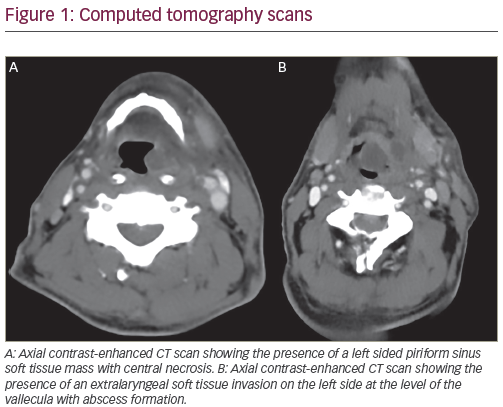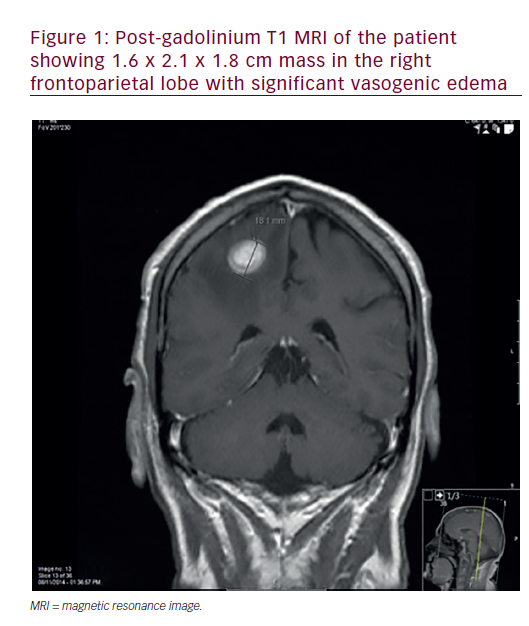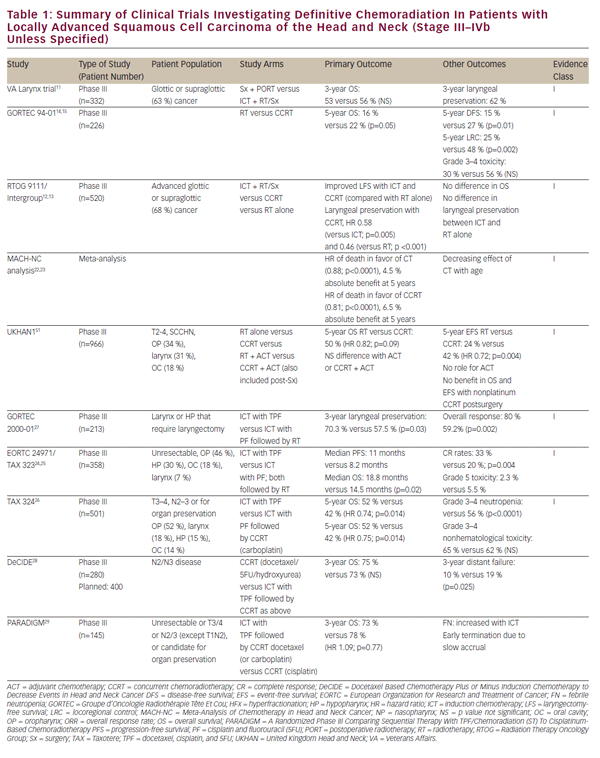Esophageal cancer is one of the leading killers in the US and around the world. It is estimated that in 2013, there will be more than 17,990 new cases diagnosed in the US and more than 15,210 deaths.1Worldwide, it is the sixth leading cancer and fifth leading cause of death, with high incidence in Southern African countries and in Eastern Asia. 2,3
Esophageal cancer is one of the leading killers in the US and around the world. It is estimated that in 2013, there will be more than 17,990 new cases diagnosed in the US and more than 15,210 deaths.1Worldwide, it is the sixth leading cancer and fifth leading cause of death, with high incidence in Southern African countries and in Eastern Asia. 2,3
Historically, more than 95 % of the esophageal malignancies were squamous cell carcinoma (SCC) and adenocarcinoma (EAC). SCC used to be the predominant type for most of the time in the 20th century.4 However, for reasons unclear, the incidence of esophageal cancer has been increasing steadily for the past decades, with a commensurate decline of squamous cell cancers;5 the diagnosis and staging modalities have been evolving as well.
The American Joint Committee on Cancer (AJCC) Staging Manual, 2010, 7th Edition staging system provided separate stage grouping for squamous cell esophageal cancer, EAC of the esophagus and esophagogastric junction (EGJ or GEJ) with similar tumor size, nodal status, and metastasis categories (tumor, node, metastasis [TNM] staging). 6
On initial presentations, regardless of the histopathology, more than half of the esophageal cancers are at incurable locally advanced or metastatic disease, which makes esophageal cancer one of the most lethal malignancies.1,2,4,6
For those patients with potentially resectable, localized tumors, disease staging plays a key role in survival. Only a small group of people who have tumors limited to mucosa or submucosa showed high cure rates via surgical interventions alone (T1N0M0).
There are still controversies regarding what to use and in what order for resectable tumors, neoadjuvant therapies, surgical resection, adjuvant chemotherapy, radiation therapy, or combination of the therapies.
Imaging studies are actually an integrated part of the staging process. Endoscopic ultrasound (EUS) is considered so far the most accurate technique for locoregional esophageal cancer staging with limitation on superficial tumors. More and more physicians are using computed tomography and/or positon emission tomography (CT/PET) instead of traditional CT as the means of staging with the concerns of rising cost and false positive results. Ultimately, laparoscopy/thoracoscopy is perhaps still the most reliable method to definitively detect intraperitoneal micro/tiny metastasis practically undetectable by EUS or PET/CT. However, the aggressiveness is also obvious.
Overall, the incidence of superficial esophageal cancer (limited to mucosa or submucosa) is increasing steadily, not only in Asian countries, 7–10 where esophagogastroduodenoscopy (EGD) is almost a routine to screen for cancers in upper gastrointestinal tract 11 and in the US, due at least partly to the endoscopic surveillance of malignancies and high-grade
dysplasia (HGD) in patients with Barrett’s esophagus. 12–14 Procedures with fewer side effects, such as radiofrequency ablation, endoscopic mucosal resection, photodynamic therapy, and laser ablation, have become the more favorable modalities in the US. Minimal invasive esophagectomy is another less-aggressive procedure in early esophageal cancer treatment.
However, due to its complexity, it is usually limited to the tertiary centers and not considered the ‘standard’ treatment.
The reviewers of this article pay much attention to the advancement of multimodality management of esophageal cancer other than surgery alone. The key issue in management of locally advanced esophageal cancer is to discriminate resectability of the disease, such as to exclude T4b tumors, poor surgical candidates, and those who refused surgical intervention.
Tumor board discussion of the cases with multispecialty involvement has been accepted by majority of the hospitals.
For resectable, operable cases, decision should be made to start with neoadjuvant therapy (chemotherapy or chemoradiation therapy), perioperative chemotherapy, or adjuvant therapy (chemotherapy or chemoradition therapy).
The British Medical Research Council (MRC) clinical trial recruited more than 800 patients who showed superiority of neoadjuvant chemotherapy versus surgery alone. Cisplatin plus 5-FU were used as combination chemotherapy prior to surgery in esophageal cancers of all types. A median survival benefit of 107 days was achieved in the neoadjuvant chemotherapy group (p=0.004)15 (see Figure 1).
Subsequently, some clinical trials were designed to explore the effects of preoperative, concurrent, or sequential chemoradiation therapies for resectable esophageal cancers. Two of them were well designed and showed encouraging outcomes. A Dutch group16 (CROSS Trial) tested the effects of surgery alone versus concurrent chemoradiation therapy prior to surgery. All patients (368) were from the Netherlands and were randomized to two groups: either surgery alone or chemoradiation with weekly paclitaxel (50 mg/m2) plus carboplatin (AUC2) plus concurrent RT (41.3 Gy in 5 weeks) followed by surgery. Adverse events (AEs) were slightly higher but acceptable in the CRT-surgery group. Median overall survival (OS) was significantly higher in the CRT-surgery group (49.4 months) over surgery alone group (24 months). Higher R0 resection rate and higher pathologic complete response (pCR) were also observed in CRT-surgery group over surgery alone group (R0: 92 versus 69 %; pCR: 29 %). Another concurrent neoadjuvant chemoradiation therapy trial with fewer patient enrollment showed a similar result.17 Subsequent sequential chemotherapy followed by radiation therapy showed negative results, suggesting that the neoadjuvant concurrent chemoradiation therapy
(tri-modality) should be the wise choice for stage II/III resectable esophageal cancers.
Two phase III clinical trials conducted in Europe compared perioperative chemotherapy ECF18 and CF19 (E=epirubicin; C=cisplatin; F=5-FU) versus surgery alone, which showed improved survival in perioperative chemotherapy groups. Carcinoma of the gastric was included and consisted of nearly 60 % of the enrolled cases. The benefits of perioperative chemotherapy using other regimens versus surgery alone are being tested as well.
The comparison between neoadjuvant chemotherapy versus neoadjuvant chemoradiation therapy was also studied, which showed nonsignificant better outcome in favor of chemoradiation group.20 A large phase III trial studied the benefits of adjuvant chemotherapy using 5-FU/leucovorin/radiation. Results of this study suggested 9 months median survival benefits of adjuvant chemoradiation group. 20
A large phase III trial studied the benefits of adjuvant chemotherapy using 5-FU/leucovorin/radiation. Results of this study suggested 9 months median survival benefits of adjuvant chemoradiation group. However, not all locally advanced esophageal cancers are resectable/operable. For those unresectable esophageal cancers, physicians still should carefully review the status of the diseases and the performance of the patients. Decisions should be made to pursue chemotherapy or chemoradiation therapy, with curative intent or palliative treatment only.
A landmark study with more than 1,000 patient enrolled tried to answer the question which was the best chemo regimen combination for those unresectable esophageal cancers. Triplet chemo regimen combinations of ECF, ECX, EOF, and EOX (O=oxaliplatin; X=capecitabine, an oral fluoropyrimidine) were compared in parallel. The EOX group showed a small but statistically significant longer median survival versus other groups.22 Based on these data, some physicians prefer the EOX combination over ECF as first-line therapy among unresectable locally advanced or metastatic esophagogastric cancers (see Figure 3).
The incidence of squamous cell esophageal cancer has been decreasing for the past decades. Clinical trials were attempted to study the benefits of chemoradiation versus radiation alone in mainly unresectable squamous cell esophageal cancers.23 Combination modality showed significant survival benefits with higher adverse events (see Figure 4). The optimized dosage of radiation were also studied with the results showed better outcome in the low-dose protocol (50.4 Gy versus 64.8 Gy).24
Her2/neu mutation testing is the first tumor marker in esophageal cancer that has had an impact in therapeutic guidance. Addition of trastuzumab showed clear survival benefits in Her2/neu-positive unresectable esophageal cancers.25 Based on this trial, most oncologists consider the Her2/neu test part of the required diagnostic workup in guiding therapy.
Unfortunately, with all the advancements, esophageal cancer is still one of the leading killers in malignancy. A majority of patients will eventually experience metastasis even with extensive treatment discussed above. The long-term survival is very bad with <3 % in distant metastatic esophageal cancer patients.26 Some of the metastatic diseases were diagnosed at restaging after treatment with surgery, chemotherapy, radiation therapy, or combination of the modalities. During the patient encounter, the patients should be informed of the diagnosis as soon as possible and the discussion should be focused not only on the therapeutic modalities but also on the goal of the treatment. Involvement of the palliative care service is also an important step during the conversation. Clinical trial enrollment to explore the effects of novel agents and treatment modalities is the key in improvement of esophageal cancer management. Traditional cytotoxic agents, monoclonal antibodies, and tyrosine kinase inhibitors (TKIs) were all involved in the studies.The need for a multi-institute international phase III study is obvious. The collaboration between clinical investigators and community oncologists as well as the collaboration among various subspecialty physicians, such as medical oncology, radiation oncology, and surgical oncology/thoracic surgery are critical in the investigational studies. nEsophageal








